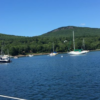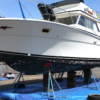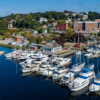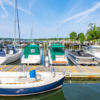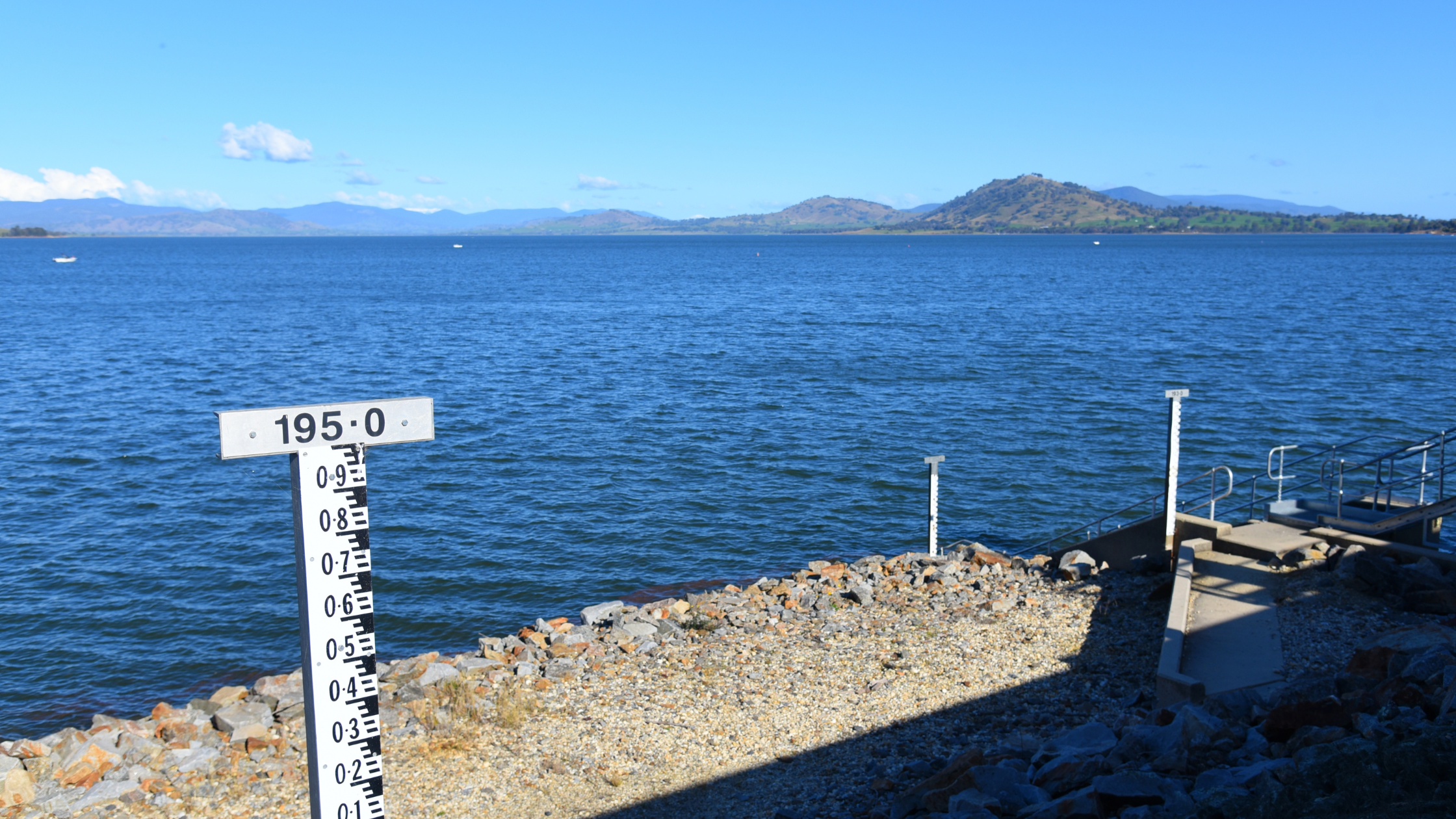
An essential part of boating is understanding tides – what they are, how they work, where to get information on tidal status, and how it will impact your boating. Plan a safe boat outing by taking tides and currents into account before you ever untie the dock lines.
What are tides and what causes them?
 Tides are the regular rise and fall of seawater surface visible at coastlines like beaches and harbors. Tides are long-period waves caused by the gravitational force (or pull) of the moon (and to a lesser extent, the sun) and they move in a predictable manner causing high and low tides that fluctuate over a six or 12-hour cycle and vary by location on Earth.
Tides are the regular rise and fall of seawater surface visible at coastlines like beaches and harbors. Tides are long-period waves caused by the gravitational force (or pull) of the moon (and to a lesser extent, the sun) and they move in a predictable manner causing high and low tides that fluctuate over a six or 12-hour cycle and vary by location on Earth.
What are the different kinds of tides?
There are diurnal and semidiurnal tides. Diurnal means there is one high and one low tide per day in a particular area. Semidiurnal tides have two high and two low tides (changing about every six hours) but they’re generally of unequal height. A “King” tide is exceptionally high tide during a full moon and if it coincides with a storm, you can expect flooding in coastal areas.
Tides with the largest difference between high and low are called “spring” tides while tides with the smallest difference are called “neap” tides. There are two neap and two spring tides each month.
What are tidal currents?
Tidal current is the horizontal movement or flow of the water as tides move into (flood current) and out of (ebb current) an area. These currents can be quite strong in constrained locations like estuaries, harbor inlets or narrow straits, and they can make boat handling difficult. “Slack” tide occurs when the movement of water is the slowest is ideal when docking a boat or making passage through a long narrow body of water.
Where do you get tidal information?
Tides are predictable and there are tables available online, via numerous mobile apps, and on the National Oceanic and Atmospheric Administration website. Various state resources also have tide tables as do navigational programs such as Navionics and C-Map which are loaded into chartplotters.
Tides are read as a number relative to the height of the water from zero and they can be a negative number – for example, a 4.5 high tide or a -1.5 low tide. In the US, tides are expressed in feet and from what’s called “mean low water” which is an average. When searching for tidal information, you’ll be looking for data for a “tide station” closest to your location.
Boat handling and tides/current
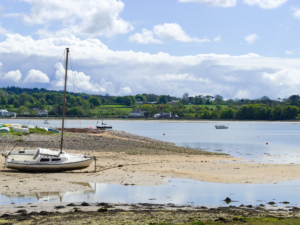 Tides and currents are important to boaters everywhere and especially those who rely on tides to enter or exit a harbor (especially with a deep draft) or maneuver under a bridge (with high air draft. Some areas may only be accessible at high tide so it’s good to know when that will occur. Those at higher latitudes definitely need to understand tides because the farther from the equator, the greater the tidal range. In other words, there are much higher and lower tides in Maine than there are in Florida.
Tides and currents are important to boaters everywhere and especially those who rely on tides to enter or exit a harbor (especially with a deep draft) or maneuver under a bridge (with high air draft. Some areas may only be accessible at high tide so it’s good to know when that will occur. Those at higher latitudes definitely need to understand tides because the farther from the equator, the greater the tidal range. In other words, there are much higher and lower tides in Maine than there are in Florida.
If you run aground at low tide, you may be able to wait it out until the water rises and lifts your boat. Of course, that works the other way too so if you beach your boat at the sandbar at high tide, you may be stuck there until the next high tide.
Docking when the tide is running strong (when the difference between high and low tides is the greatest) can be tricky. Ideally, you should plan to dock at slack tide but if that’s not possible, approach a dock going bow into the current where you’ll have maximum engine power to push forward if needed. Backing against a current is harder. When docking in a cross-current, compensate by lining up on a dock slightly up current and let it carry your boat down into place.
Tides will even effect how hard it is to load or unload your boat. If you’re at a fixed rather than floating dock, getting gear onto or off the boat may be harder and the dock ramp may be exceptionally steep at low tide so watch your footing.
Use tidal currents to your advantage. For example, you can ride a flood tide into of a harbor to get home faster, or you can use an ebb current to exit and use less fuel as you head out for the day.
Understanding tides and currents is an essential part of building boating expertise and it could save the day in some situations. Learn where to find tidal information and how to read it, and reference it every time you head out.



